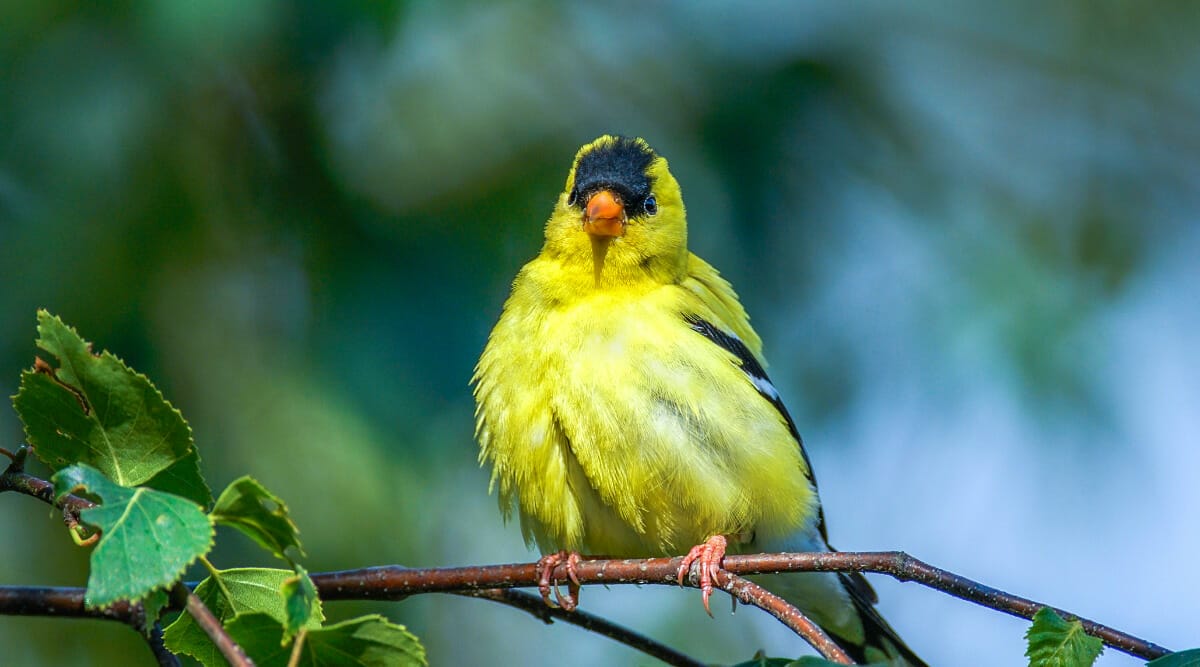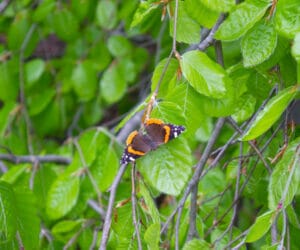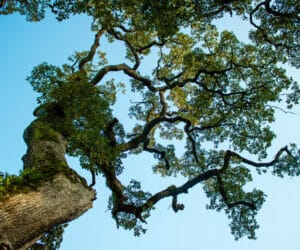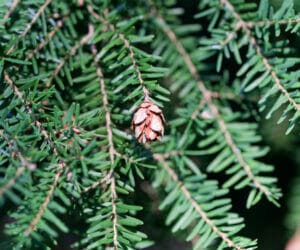TL;DR
- Planting trees in Portland can attract essential pollinators like bees, birds, and butterflies, enhancing your yard’s ecosystem.
- Cherry trees provide pollen for bees and shelter for birds, while crabapple trees offer edible fruit and flowers for pollinators.
- Maple trees attract bees and butterflies with their sugary sap, and oak trees provide safe nesting sites for birds.
- Dogwood trees are perfect for birds to build nests, and evergreen trees offer year-round food and shelter.
- Consult a certified arborist to select the best wildlife-friendly trees and avoid using harmful chemicals to protect pollinators.

Over time it has become no secret that bees, birds, and butterflies are essential to not only having a beautifully flourishing yard, but they are also essential to the ecosystems throughout the Portland area and the rest of the world. The rainy climate in Portland and the rest of the Pacific Northwest allow all plants and greenery to thrive here. Lush trees, blooming flowers, and mild summers are the perfect climate for birds, bees, and butterflies to thrive.
Birds, bees, and butterflies are essential to all ecosystems across the world. Pollination occurs when plant pollen grains from a male plant are transferred to a female plant. Through this process, the female plant is effectively fertilized and creates seeds. Pollination is possible due to bees, birds, butterflies, beetles, wasps, and a vast array of other insects and mammals. It is not uncommon for individuals to see bees and butterflies in their yards with legs chock-full of pollen. They take the pollen and collect it by sticking it to their legs, and as they travel from flower to flower they effectively help pollinate the plants in the yard and surrounding area. Birds, bees, and butterflies are some of the most effective at helping to create diverse landscapes throughout Portland.

Portland is home to many different species of feathered life, including Great Blue Herons, Western Tanagers, and Anna’s Hummingbirds, whether it be year-round or just for a couple of months. On top of that, over 500 species of bees live throughout Oregon, accompanied by Monarch butterflies, Red Admiral butterflies, and Painted lady butterflies. With such a high amount of diversity in not only species but colors and behaviors, it’s easy to see why so many homeowners wish to design their landscaping with the hopes that they will attract and provide sustenance for the local birds, bees, and butterflies. One way to do this is to plant trees that are a bird, bee, and butterfly friendly. Not only will these types of trees provide a unique and charming aesthetic to the landscaping, they will also provide shelter and sustenance to the gorgeous birds, bees, and butterflies that live in the area.
The best way to determine which trees will work best with the landscaping and attract the most wildlife, hiring a certified arborist at Urban Forest Pro is the best choice. We have the ability to create a yard that is landscaped to invite and embrace all types of wildlife, including the vast array of birds, bees, and butterflies in Portland.
What Should You Plant in Portland to Attract Bees, Butterflies, and Birds?
There are a plethora of trees and shrubs that thrive in Portland that will also attract bees, butterflies, and birds. Ultimately, the best choice for wildlife-attracting trees depends upon the homeowner’s landscaping needs and wants. Consulting our team of expert Portland arborists and relaying wants and needs is the best way to determine the perfect plants and trees for each home. However, to give homeowners an idea of what some of their options are, we have compiled a list of trees that attract all kinds of wildlife, including bees, butterflies, and birds.
1. Cherry Trees
 Oregon is one of the top producers of cherries in the world. In fact, around $67 million of total cherry sales in the United States come from Oregon. Most varieties of cherry trees are commonly found in the Pacific Northwest and attract bees, birds, and butterflies in large quantities. One of the most commonly found is the Chokecherry tree. Chokecherry trees are a great addition to any landscape designed to embrace wildlife. Chokecherry tree flowers bloom in small clusters and boast beautiful white flowers from early April to late May. These flowers provide more than an ample amount of pollen for butterflies and bees to harvest. They also provide opportunities for bees to build their homes and caterpillars to create cocoons to start their transformation process into butterflies. After the flowers have blossomed, dark purplish-black cherries take their place that attract all kinds of species of birds. Birds also love to use the cherry tree branches to create their nests and raise their young.
Oregon is one of the top producers of cherries in the world. In fact, around $67 million of total cherry sales in the United States come from Oregon. Most varieties of cherry trees are commonly found in the Pacific Northwest and attract bees, birds, and butterflies in large quantities. One of the most commonly found is the Chokecherry tree. Chokecherry trees are a great addition to any landscape designed to embrace wildlife. Chokecherry tree flowers bloom in small clusters and boast beautiful white flowers from early April to late May. These flowers provide more than an ample amount of pollen for butterflies and bees to harvest. They also provide opportunities for bees to build their homes and caterpillars to create cocoons to start their transformation process into butterflies. After the flowers have blossomed, dark purplish-black cherries take their place that attract all kinds of species of birds. Birds also love to use the cherry tree branches to create their nests and raise their young.
It is recommended to refrain from planting cherry trees if cattle or sheep have access to them. Cherries are toxic to such animals, and when they ferment can cause the animal to essentially become drunk. Due to the immense quantity of cherries that are created, it is very likely that the cherry tree will spread throughout the landscaping as well. So if a homeowner does not want more than one cherry tree they will have to be effective and consistent about removing any growing sapling in their yard.
2. Crabapple Trees

The western crabapple tree is the only native crabapple tree in Portland and the rest of Oregon. Many bird species frequent crabapple trees as they provide edible fruit. The Cedar waxwing and American robin are two species of bird commonly seen around Portland that love to enjoy the fruits of crabapple trees. Robins like to visit fruit trees later in the day, and waxwings will eat fruit any time it is available. Waxwings are notoriously known for eating fermented fruit and becoming visibly under the influence.
The flowers of the crab apple tree provide ample amounts of flowers for bees and butterflies to get their fill and contribute to pollinating the area. It provides safety for all sorts of animals including, bees, birds, and butterflies. Crab apple trees require little maintenance and only need pruning once a year. Not only do they provide sustenance and a home for birds, bees, and butterflies, but they also provide visually appealing pinks, reds, purples, yellows, and oranges to brighten up the landscape.
3. Maple Trees
 Maple trees are a perfect example of how birds, bees, and butterflies work together. Since Maple trees do not produce flowers, bees must take a different approach to access the sugary sap that the Maple tree produces. In Portland, there are six species of woodpeckers that help the bees and butterflies find food. The Red Breasted Sapsucker, Northern Flicker, and the Downy Woodpecker are just a few of the bird species that create holes in Maple trees in an effort to extract beetles and other edible insects. Once the birds have moved on to find other sources of food, the bees and butterflies feast on the sugary sap that oozes from the holes made by the birds.
Maple trees are a perfect example of how birds, bees, and butterflies work together. Since Maple trees do not produce flowers, bees must take a different approach to access the sugary sap that the Maple tree produces. In Portland, there are six species of woodpeckers that help the bees and butterflies find food. The Red Breasted Sapsucker, Northern Flicker, and the Downy Woodpecker are just a few of the bird species that create holes in Maple trees in an effort to extract beetles and other edible insects. Once the birds have moved on to find other sources of food, the bees and butterflies feast on the sugary sap that oozes from the holes made by the birds.
Maple trees are an excellent addition to most landscapes. In the fall their colors provide an appealing and gorgeous array of yellows, reds, and oranges that will brighten up any yard. Those who wish can collect sap and create their own maple syrups if they wish to do so. Otherwise, Maple trees tend to be fairly low maintenance while still providing an abundance of food and safe space for birds, bees, and butterflies.
4. Oak Trees

Food is not the only thing that attracts birds to landscapes. Shelter and a safe place to raise their young is the ultimate decider where a bird will live and frequent. Oak trees not only provide ample amounts of cover with their branches, but they also provide safety with their great heights. Birds love living in Oak trees as it is harder for predators on the ground to reach the birds way up in the tree. It is also easy for birds to reach the acorns that fall on the ground around the Oak trees and quickly return to safety.
There are two species of Oak that are native to the Portland area: Oregon White Oak and California Black Oak. However, other species of Oak trees have been known to thrive in the Pacific Northwest. Some species are shorter than others, but they can range in size from 50ft to 100ft tall. They thrive in Portland’s moist climate as they do well in soil that is not too dry. Due to the sheer size of these trees, and the fact that they have the ability to live for over a century, these trees need more maintenance than others to ensure they thrive and provide the best habitat for attracting birds.
5. Dogwood Trees
 There are several varieties of Dogwood trees that are native to the Portland area. They tend to do well in partial sun, but can still thrive in both heat and full sunshine. They grow up to 30 feet tall and provide the perfect environment for birds to build nests. These types of trees are usually inhabited by birds that prefer to be closer to the ground but are still tall enough to provide safety from ground predators. The various variety of Dogwood trees in Portland creates beautiful year-round additions to any landscape. Their deep purple or dark red colored berries are a staple for many different species of birds.
There are several varieties of Dogwood trees that are native to the Portland area. They tend to do well in partial sun, but can still thrive in both heat and full sunshine. They grow up to 30 feet tall and provide the perfect environment for birds to build nests. These types of trees are usually inhabited by birds that prefer to be closer to the ground but are still tall enough to provide safety from ground predators. The various variety of Dogwood trees in Portland creates beautiful year-round additions to any landscape. Their deep purple or dark red colored berries are a staple for many different species of birds.
6. Evergreen Trees

Nesting sites for birds such as chickadees should be covered with a high density of vegetation. A common habitat for them is theedges of Portland forests, but these trees can also be grown in Portland backyards. Homeowners can plant various Evergreen trees in their yards, from firs to pines, to cedars and hemlocks. Their seeds are a food source for a wide variety of birds and animals, and they maintain their dense greenery all year long, making them a safe home for many varieties of animals.
Warblers’ nests are often built within the branches of Evergreen trees, giving them the advantage of being high, nestled, and camouflaged within needled trees. Predators are less likely to catch them this way. There are many varieties of Evergreen trees, with dwarf varieties growing up to 10 feet tall, while others can reach 100 feet tall.
Tips for Planting & Caring for Plants & Trees to Attract Pollinators
When thinking of planting pollinator plants and trees in a yard, in theory, it sounds easy and straightforward. However, there are a few things that homeowners must keep in mind when planting pollinator plants. The main objective of planting pollinator plants in Portland landscapes is to create healthy and nourishing sources of food and shelter for birds, bees, and butterflies. Here are a few tips on how to do so.
When To Plant
When growing from seed, the best time to plant pollinator plants is in the fall or late winter. The seeds will need time to germinate, and when not sped up through human process, they will take more time to do so. In the fall, it is best to disperse seeds and cover them with soil. When the winter snow begins to thaw in the spring it will provide moisture to the seeds to help germinate them. When planting in late winter, scatter the seeds over the top of the snow. Once the sun begins to heat up, the seeds will anchor to the snow and when it begins to melt it will provide moisture to help the seed germinate.
When starting with pollinator plants instead of seeds, it’s important to follow the frost guidance for each plant. This will help prevent planting them too early and will give them the best chance at thriving. The holes for the pollinator plants should be dug just big enough to fit their root system, and then covered to reinforce the roots with soil or compost. Adding mulch will help reduce the amount of weed growth around the plants.
Refrain From Using Chemicals
Many homeowners use chemicals, including pesticides in urban and agricultural areas to kill invertebrate pests, diseases, and weeds. However, these chemicals and pesticides are not biased when it comes to the types of insects and animals they kill. They will harm or kill massive populations of bees and butterflies if they are sprayed on or near pollinator plants. Additionally, birds who eat fruit or insects that have been sprayed with pesticides, fungicides, herbicides, or other chemicals can become sick and die as well. Other stressors, such as loss of habitat and disease exposure, can compound the effects of pesticide exposure on pollinator populations.
Chemical contamination is not just local to the plant but can be spread throughout an ecosystem. In fact, more than 90% of pollen samples from beehives as well as stream samples are contaminated with at least one pesticide. This isn’t only just harmful to bees, birds, and butterflies, but it is also harmful to a homeowner’s landscaping. Without the necessary pollinators needed, flowers and trees won’t effectively be able to pollinate themselves and will therefore lack in appearance.
Create Pollinator Nesting Areas
Unkempt areas, including tree and bush branches, are the perfect nesting habitat. Bee and butterfly sanctuaries can be created from old scrap wood pieces, hollow stems, and drilled bee blocks or nest boxes. Do not clear nests or cocoons out of trees and plants, as the nests will be reused year after year, and the cocoon holds what will eventually turn into a butterfly.
If you are considering planting trees in Portland, Oregon, to attract birds, bees, and butterflies or need help with a current tree on your property, we offer a number of professional tree services for our customers to help maintain, remove, or select new trees.